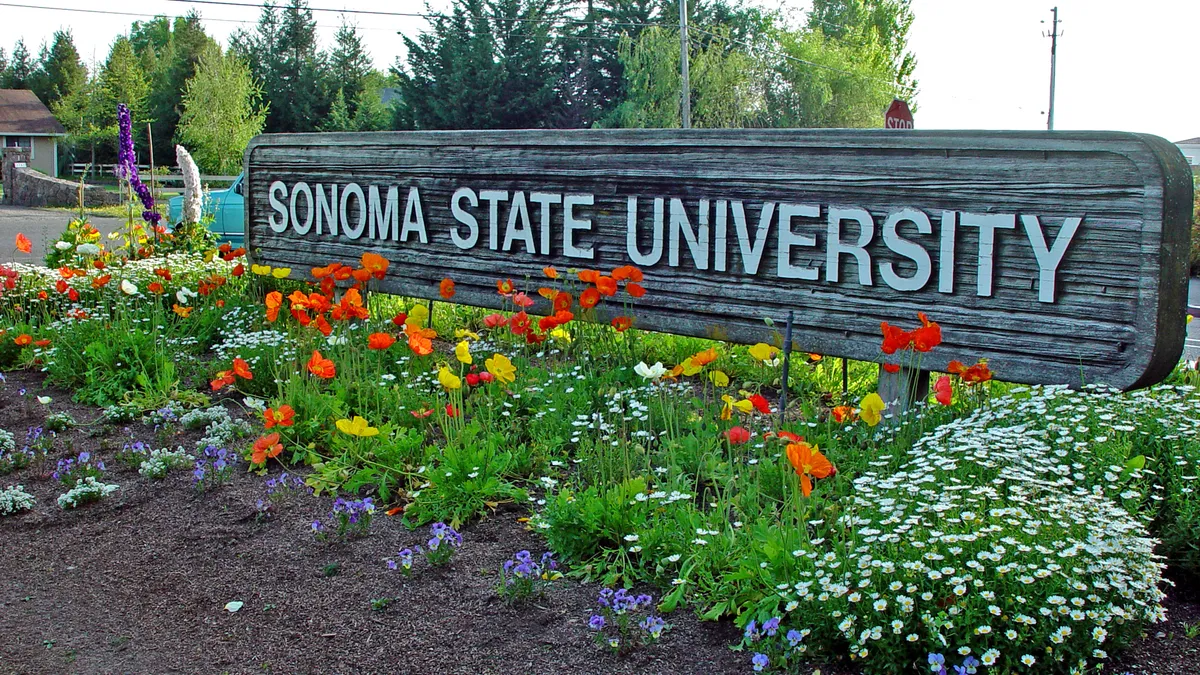Dickinson State University will cut eight faculty positions — laying off five tenured professors — as it looks to eliminate seven academic programs, including mathematics, theater and information analytics.
President Stephen Easton has said cutbacks are needed to correct a projected $1 million budget hole. The university hasn’t fallen into a financial crisis, according to Easton, but he has warned it would if current spending levels continued.
The North Dakota State Board of Higher Education must sign off on the academic reductions. But regardless, Easton’s moves will assuredly inflame tensions at the public college.
Easton’s critics have charged that he’s merely trying to drop tenured faculty who have spoken out against him under the guise of consolidation. Earlier this year, Easton railed against what he called “nonproductive tenured faculty” when he testified in favor of a state bill, HB 1446, that would have given him power to more easily fire tenured faculty members.
What’s being cut?
Easton first told faculty about possible program cuts in August. He said his administration had identified low-enrollment majors, and that it was necessary to shed them to preserve the university’s financial health.
Initially, a wide range of degrees, including computer science, chemistry and several secondary education programs, were on the chopping block.
A faculty entreaty earlier this month, however, seems to have helped save some programs.
Faculty had specifically pleaded to maintain education majors, referencing how North Dakota Gov. Doug Burgum this month created a task force to study the state’s significant K-12 teacher shortage.
Now, the university intends to only discontinue a bachelor’s in mathematics education.
The other programs it plans to drop are majors in communication, political science, music, theater, mathematics and information analytics. As part of the academic overhaul, the university will also distill its nine departments into four schools.
Easton, in an interview Wednesday, acknowledged the importance of training teachers, especially because Dickinson State started in 1918 as a normal school that taught pedagogy.
He also said he was persuaded to keep science programs, as faculty in those degrees had convinced him they could recruit new students.
Easton said three faculty members in the affected programs have already resigned since July 1. He informed five other faculty on Wednesday that they were being laid off.
Dickinson State, which enrolls about 1,450 students, must give those five tenured faculty one year’s notice, according to North Dakota University System policy.
Easton said he met individually with the five faculty, and the university offered them severance packages. He did not detail what severance it provided.
He once again denied criticisms that the belt-tightening meant to target faculty. The university is simply adjusting to student demand, Easton said.
Accusations of retaliation have come from Easton’s own faculty and beyond the campus.
The president of North Dakota United, a union representing some faculty members, said in a statement Wednesday that Easton wants to “rid himself of dissenting voices on his campus,” citing Easton’s support for tenure bill HB 1446.
That legislation would have enabled Easton to call for a review of tenured faculty members at any time. He could then have opted not to renew their contracts if they didn’t meet job expectations.
“Dr. Easton’s impetus for choosing to go down this road of eliminating programs and departments is less about financial stewardship and more about his aversion to shared governance,” said Nick Archuleta, the union president.
Easton said he hadn’t read Archuleta’s statement.
“I wouldn’t expect him — as someone representing public employees — not to be opposed to five public employees losing their employment,” Easton said.
What happens now?
It’s possible — but unlikely — that the program cuts won’t move forward, as North Dakota’s higher ed board must OK them.
Easton said he doesn’t know when that will occur, but that it’s unlikely it will happen Sept. 28, when the board meets next.
Faculty also can appeal the decision to fire them — but those appeals would go to Easton. Any appeals are due in mid-October, and by early November he would let them know if they still have positions.
Easton said he doesn’t know much money precisely the cutbacks will save, but it will be “a pretty significant chunk” of the $1 million annual shortfall he forecasted.
Each faculty position lost will typically yield — in a rough estimate, Easton stressed — a little more than $100,000 in savings. He said, however, this calculation doesn’t account for salaries.
For now, Dickinson State is turning to teach-out programs for the 44 students in majors that it will discontinue, Easton said. Of those students, 20 are seniors, meaning the cuts, which take effect next year, likely won’t disrupt their graduation plans, he said.
Dickinson State is considering how to accommodate the remaining students, including by having them enroll in some classes at other institutions, Easton said. In “rare instances” they might have to transfer elsewhere, he said.
Does Dickinson State really have problems?
Dickinson State presents an unusual case of a college publicly declaring it’s not reached a financial tipping point yet still pruning tenured faculty jobs.
While Dickinson State’s enrollment has fallen slightly year over year, from 1,473 students in fall 2022, it’s up from pre-pandemic numbers, Easton said. The university enrolled 1,350 students in fall 2019, according to federal data.
Enrollment is a key metric at any higher education institution. But North Dakota’s public colleges face an extra layer of pressure, because the state partially funds them based on how many credit hours students complete.
The university has already tried to scale back expenses. A presentation Easton made last month showed it reduced costs by $5.3 million in 2020, including $2.6 million from not filling vacant positions and $1.2 million in nonpersonnel costs.
As a part of those 2020 savings, Dickinson State fired 14 employees, resulting in an extra $864,676 over two years.
Those weren’t tenured faculty jobs, however.
The American Association of University Professors, the nation’s leading faculty group, posits that colleges should not dismiss tenured faculty unless they declare financial exigency, essentially a budget calamity.
AAUP noted this standard in a letter to some Dickinson State faculty members this month, prior to Wednesday’s announcement of which programs would be eliminated.
“We also hope that Dickinson State’s administration, working jointly with the faculty, will revise the process by which it plans to eliminate and consolidate academic programs to make it consistent with the aforementioned AAUP-supported governance standards,” the organization wrote in the letter.
That didn’t happen.
Steven Doherty, a political scientist and chair of the social sciences department, was one of the five faculty casualties. He said he firmly believes the cuts mean to silence Easton’s critics.
Doherty, who has been at Dickinson State for about 20 years, said he has spoken out against Easton. He said his meeting with Easton on Wednesday lasted only several minutes, and the severance package offered was “nothing.”
The university didn’t compensate him monetarily, but instead offered to allow him to come back for six weeks next academic year before his employment officially ends near the end of September 2024.
“It’s tough,” Doherty said. “I feel like I’m part of this campus. I know everything about it. And it feels like I’ve been just abruptly removed from campus.”





















